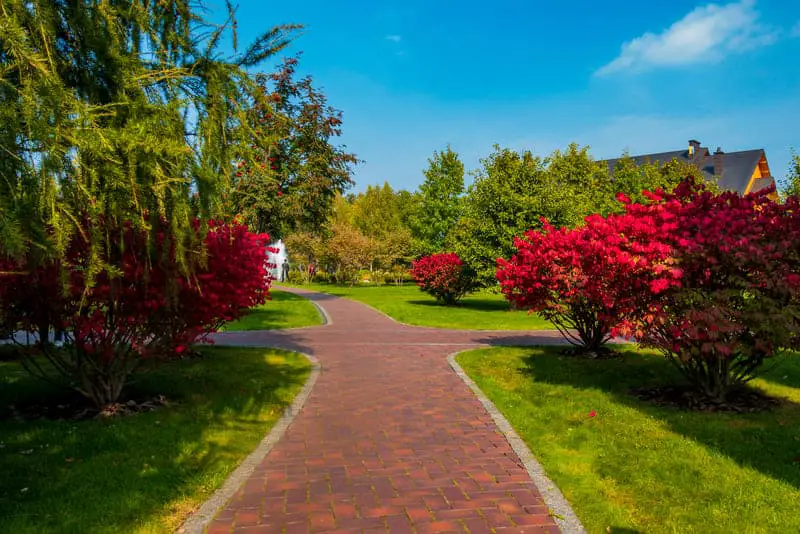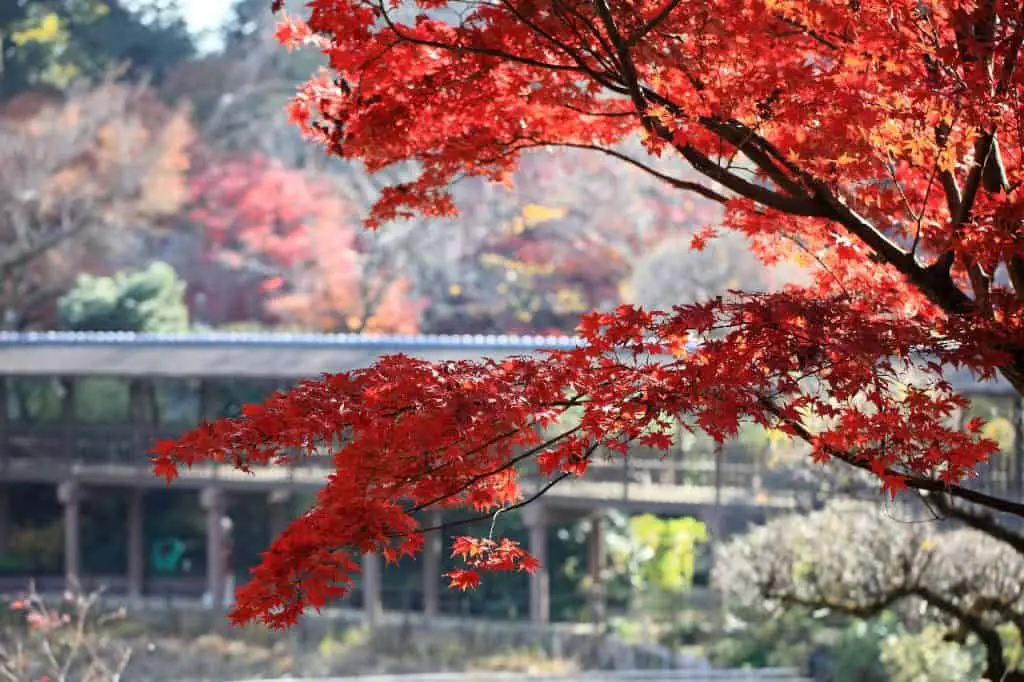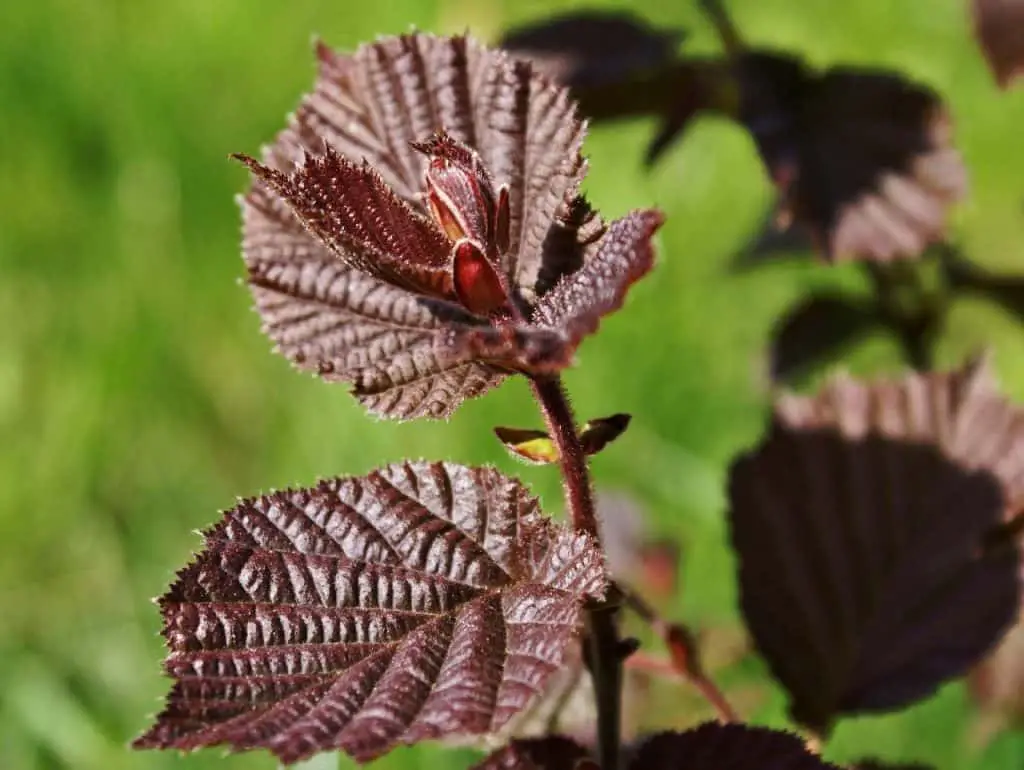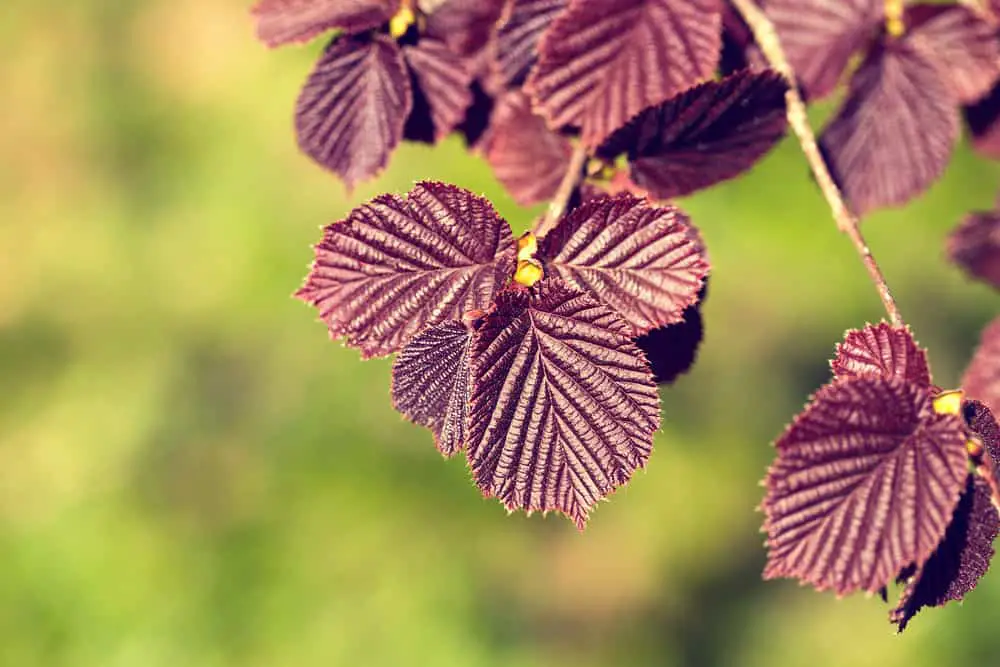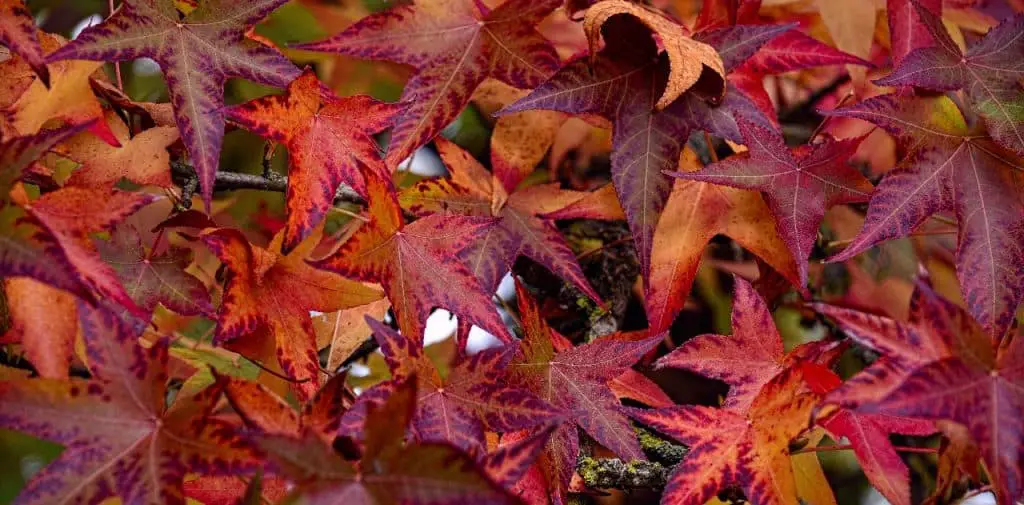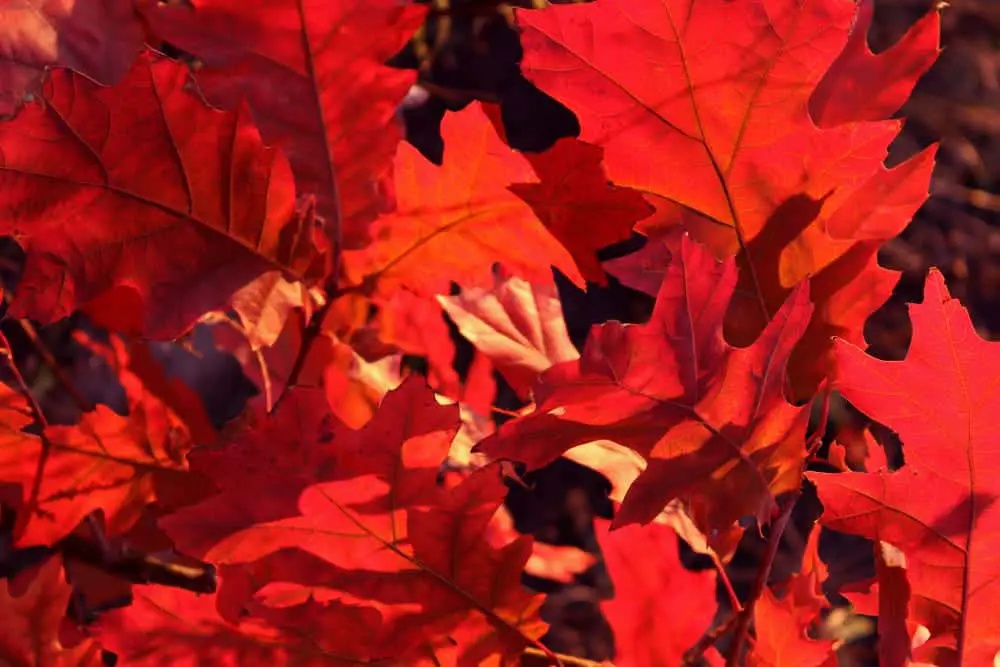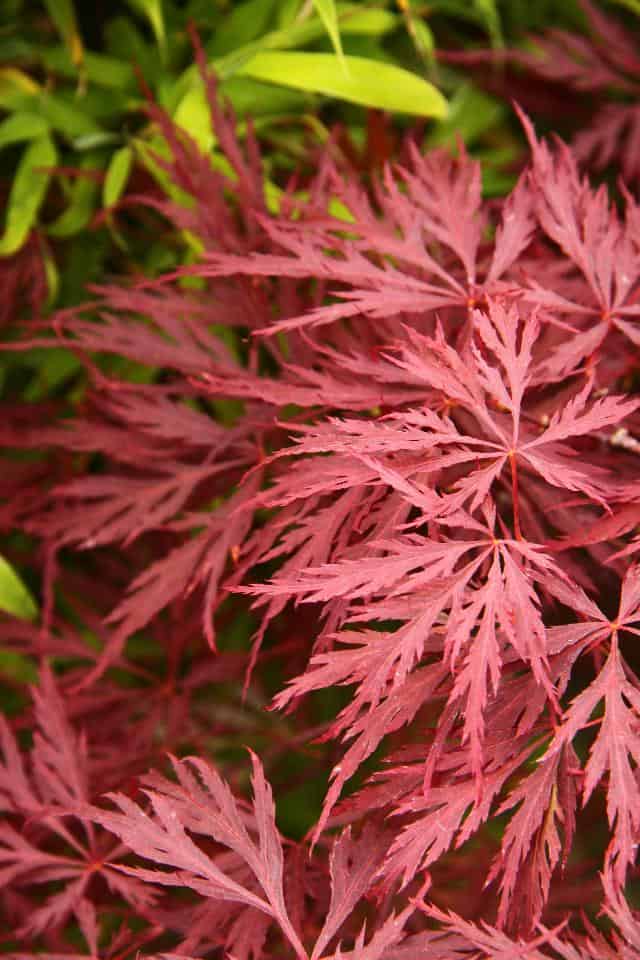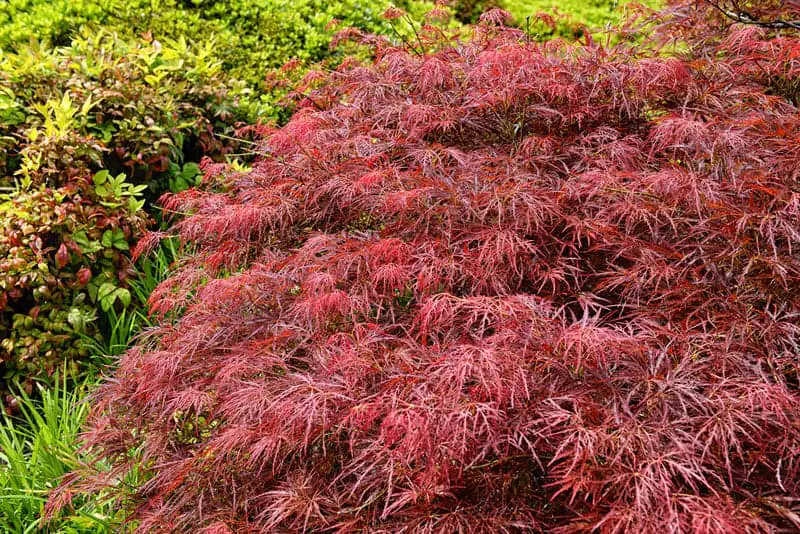Watching leaves change color from green to shades of yellow through to orange and red is so lovely on the eye in the fall.
Read on to learn more about 15 trees that offer red foliage to any garden throughout the gardening year.
1. Red Maple leaves
Also known as Acer rubrum, this tree provides a gorgeous shade of red foliage as the fall arrives. Not only does it delight with red foliage in the fall.
But it is also a tree that brightens our gardens with really, bright red blooms in the spring! The stems do not disappoint either if scarlet is your favorite color.
They are vivid red and the fruit which grows later in the year is another shade of pinky red. It grows to an extremely tall 39-40 feet. Therefore, make sure you have the space for it or keep it in a shrub pot to contain its size.
2. Copper Beech
This tree is also known as European beech and purple beech, but I beg to differ.
I think its orangey leaves certainly fit into the burgundy red spectrum, providing your garden with a splash of color in the fall.
This happily grows in the shadier parts of your garden too and in the US it grows well in Pennsylvania and New Jersey.
3. Bloodgood Acer
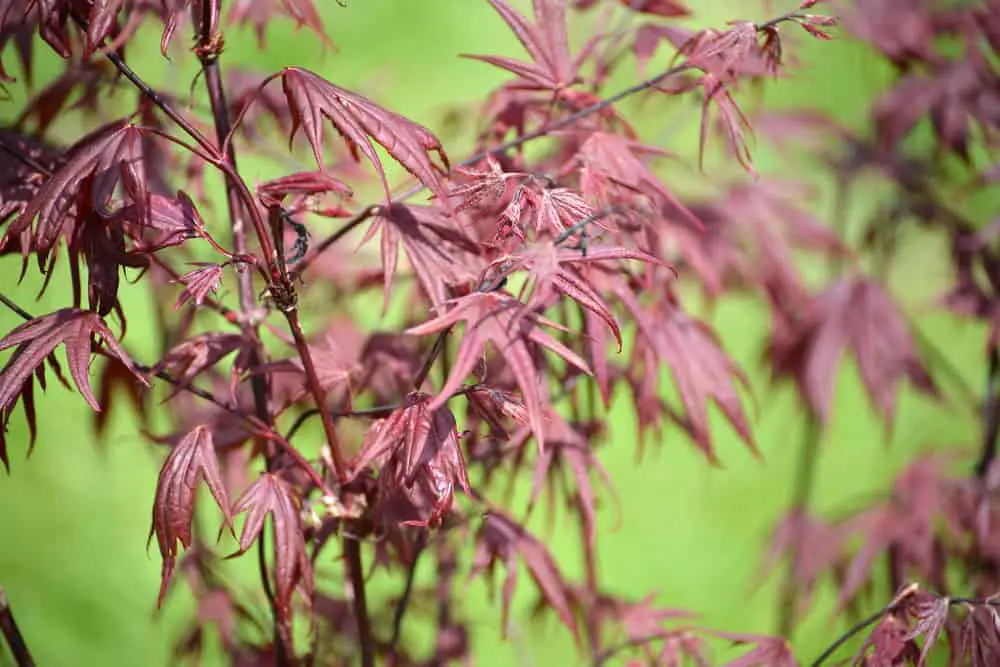
With the arrival of the fall, its leaves transform to an alluring crimson red color. It is a small tree so you can plan a garden design around it without expecting it to grow gigantic.
It has a maximum height of 16 feet. And it spreads to the same width, making a clean shape against which you can plant colors to suit.
4. Burning Bush Euonymous
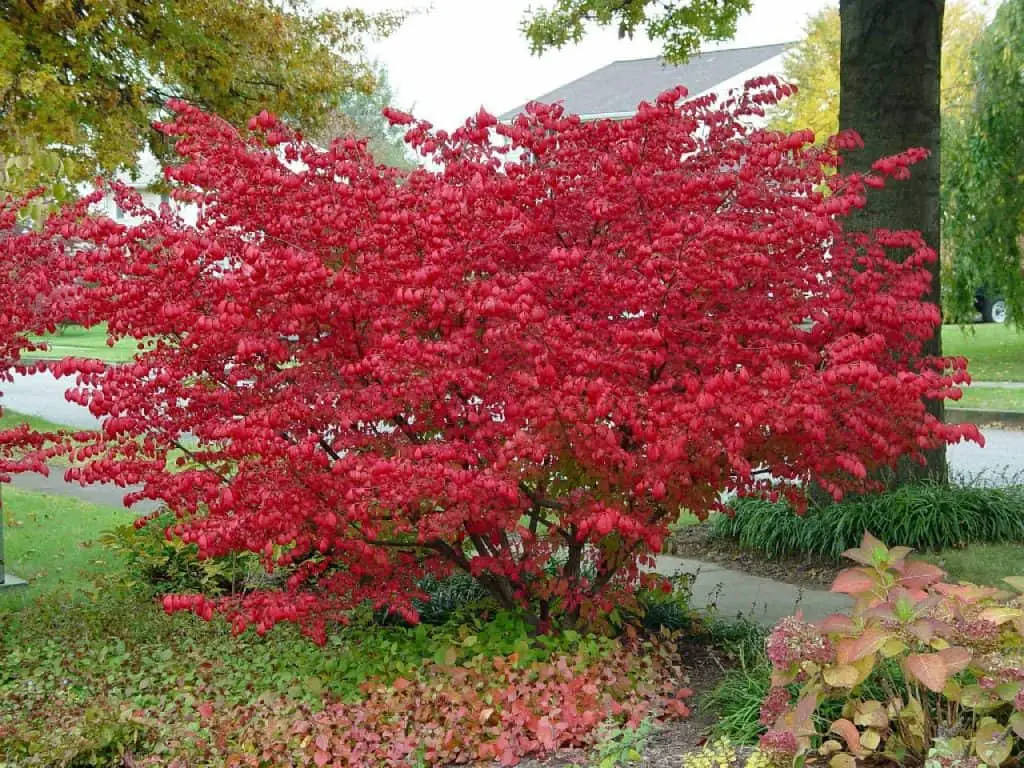
The change occurs around the same time as the first frosts so this is a harbinger of the cold winter ahead. It is more of a shrub than a tree but deserves its place in any garden for its gorgeous display in the fall and its cheerfulness in a season of cold and darkness.
5. Dogwood
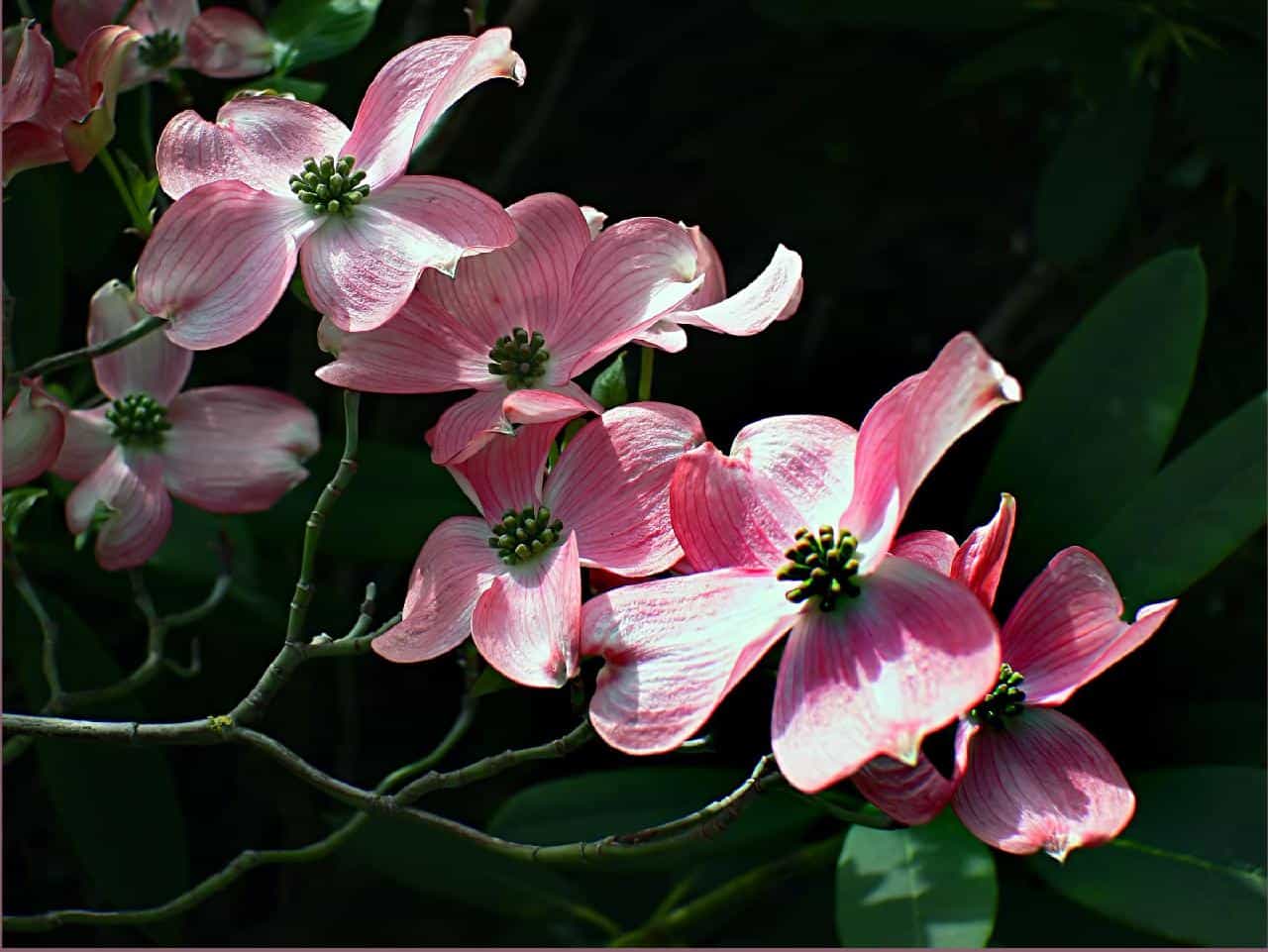
However, there are species of Dogwood that have red leaves as well and their beautiful blooms make this a must-have in your garden.
“Summer Gold” has leaves that have beautiful verdant green, spiky-edged leaves, bordered with yellow in springtime. In the fall, these gorgeous, patterned leaves transform to flame-colored red. Be careful with spread – this one likes to move sideways.
6. Red Majestic
It has also got the name of Red Corkscrew Twisted Hazel. This is the first of the red-leaved hazels I have included – see also purple hazel below. ‘Red Majestic’ is the rare and unusual red-leaved form of the contorted twisted stem which visibly curls.
This is a tree to talk about with gardening friends; its unusual catkins and colored nuts make it a must for flower decoration. It needs sunlight to thrive and can grow well potted in a container. You will need to prune it (like all hazels) every fall and maybe spring too to keep it compact. You can use these hazel prunings as supports for beans you plant instead of using bamboo canes.
7. Red Hawthorn
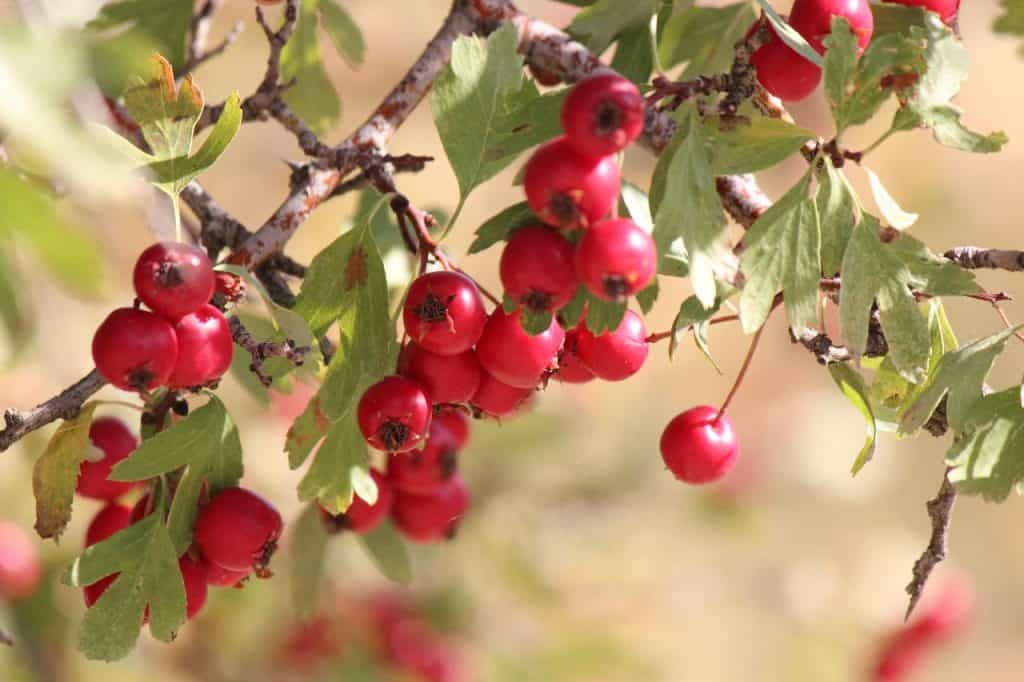
In the fall, the red berries are delightful too and this is a great wildlife tree providing a place for butterflies to lay eggs and caterpillars to thrive, then offering a valuable food source for birds throughout the cold winter season.
8. Photinia Red Robin
This one grows as a shrub or a tall hedge in some gardens, providing red leaves from spring through to the fall. This is an unusual tree because it has green and red foliage on the tree at the same time.
Almost orange in color in spring, the leaves are pointed and thin contrasting sharply with the green leaves alongside. The flowers are bunched and white and in the fall, the leaves transform to a bright red. A really cheerful tree to place outside your door, to provide color as the winter is pulling in.
9. Purple hazel
Also known as Corylus maxima purpura, is the second of the hazels included here.
It delights the eye all year round. In spring, the first sign of life you notice is that there are reddish catkins hanging daintily from the tree. These are followed by a display of dark red, almost purple, leaves later in spring.
As the season progresses the catkins are pollinated and then begin to turn into nuts, which grow all summer long. The tree changes to a lighter red color in the fall, providing you not only with color but also tasty hazelnuts.
By late November, early December, when you are pruning back these stems, they make excellent Christmas decorations which you can add to wreaths and candle arrangements. Truly this is a tree of all seasons.
10. Toringo Scarlet Crab Apple Tree
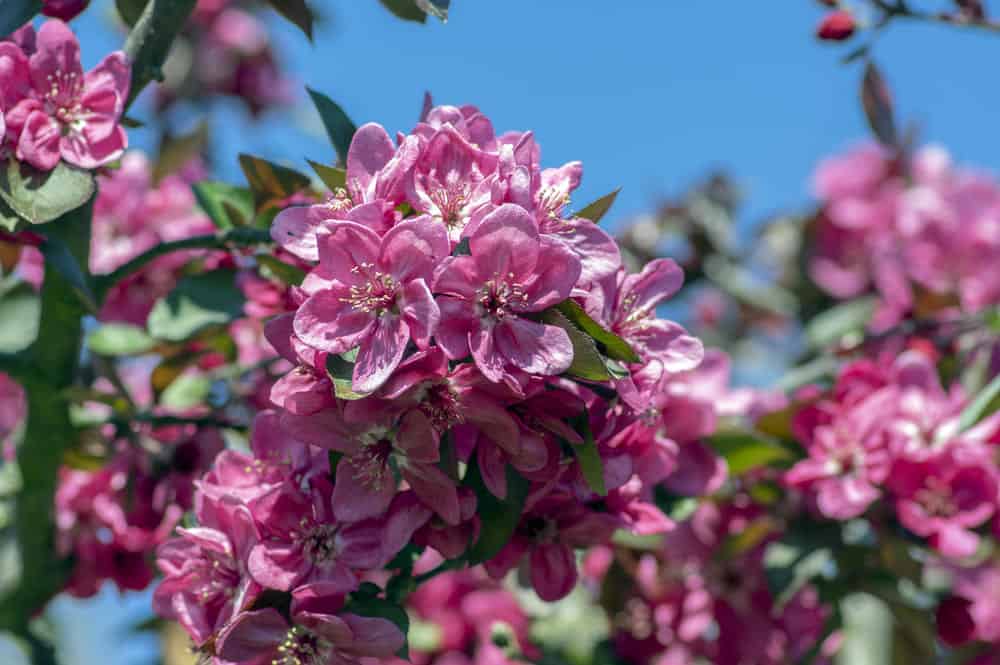
Later in the year, this tree also provides a colorful display of fruit which adds interest to your garden in fall while also providing you with a bountiful crop of crab apples, which can be used to make crab apple jelly.
11. Burning Bush Spindle tree
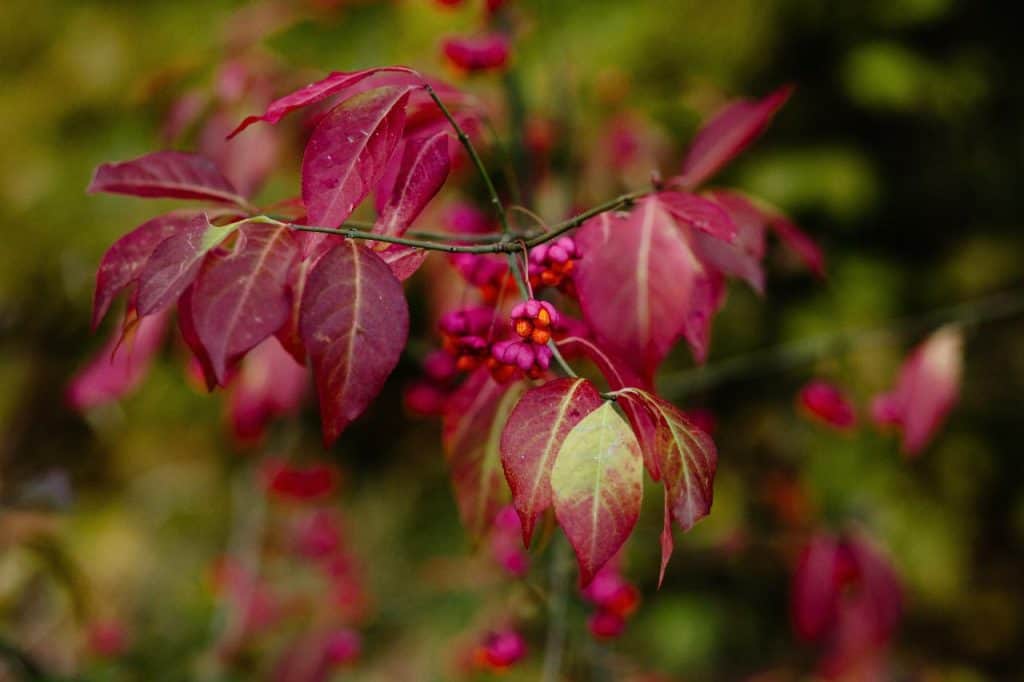
Right around the first frosts, the green makes way for a screaming purple-red color.
More exposed plants and branches turn color first, making for two-tone shrubs in October, which is also when the berries take on their red color. This plant makes a statement even when seen from some distance away. Few shrubs can rival this for autumn color.
This specimen differs from the regular shrub form we sell in that it has been trained as a small tree – supplied with a clear stem and bushy head of foliage. Most unusual in this form and sure to find a home with discerning designers looking for something different in their gardens.
12. Sweetgum tree leaves
They provide your garden with displays of scarlet foliage when chill winds have begun to arrive with the fall. Also known as Liquidambar styraciflua, this tree grows in the mountains of the eastern United States.
They produce yellow flowers in spring but it is the color of its deep-lobed leaves in fall that makes this a favorite in many gardens and parks. Bright green leaves change to darker shades in summer and in the fall, they change from yellow to orange and red.
13. Scarlet oak
They have beautiful red foliage year-round but this tree really does not like soils that are too moist. It grows quickly too.
14. The Firecracker
This is the common name for Acer palmatum dissectum, so you can guess what color the leaves are in the fall. Its deep-red, finely shaped leaves turn bright red just as cold winter winds arrive when we long for bright fires to warm and comfort us.
This compact tree does exactly that with its vibrant color. It also has green flowers in spring which turn to seed pods later in the season.
15. Filigree weeping purple Acer
This is a type of Japanese maple tree, which is covered in rust-colored foliage in spring, turning to a purple color in summer, which surprises the eye again in the fall when the leaves turn bright orangey-red. This tree is worth keeping your eye on the whole year round in any season.

